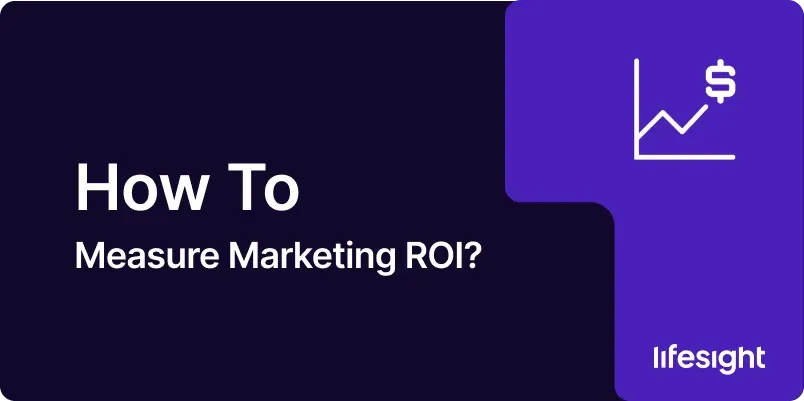
Introduction
Measuring Marketing Return on Investment (ROI) is essential for businesses to assess the effectiveness of their marketing efforts and allocate resources wisely. A comprehensive understanding of ROI enables marketers to make informed decisions, optimize strategies, and demonstrate the impact of marketing activities on the overall business objectives. In this guide, we’ll walk through a step-by-step process to help you measure Marketing ROI effectively.
Step 1: Establish Clear Objectives
Begin by setting clear and measurable marketing objectives aligned with your overall business goals. Whether it’s increasing brand awareness, driving sales, or expanding the customer base, well-defined objectives provide a foundation for measuring ROI.
Step 2: Define Key Performance Indicators (KPIs)
Identify Key Performance Indicators that directly align with your marketing objectives. KPIs serve as quantifiable metrics to gauge the success of your campaigns. Common marketing KPIs include conversion rates, lead generation, customer acquisition cost, and customer lifetime value.
Step 3: Implement Tracking Mechanisms
Integrate robust tracking mechanisms across your marketing channels. Use tools like Google Analytics, marketing automation platforms, and custom UTM parameters to monitor user interactions, website visits, conversions, and other relevant metrics.
Step 4: Assign Monetary Values
Assign monetary values to various marketing outcomes. For example, determine the revenue generated from each conversion, the average value of a lead, or the customer lifetime value. This step is crucial for quantifying the impact of marketing efforts in financial terms.
Step 5: Calculate Marketing Costs
Accurately calculate the costs associated with your marketing initiatives. Include expenses for advertising, content creation, software subscriptions, personnel, and any other relevant costs. A detailed breakdown ensures a comprehensive understanding of the investment made.
Step 6: Determine Revenue Attribution
Attribute revenue to specific marketing channels and campaigns. Use attribution models to understand how different touchpoints contribute to conversions. This attribution analysis helps allocate revenue to the appropriate marketing sources.
Step 7: Calculate Marketing ROI
Utilize the basic formula for calculating ROI:
ROI=(Revenue – Cost)÷ Cost ×100
This formula expresses ROI as a percentage, providing a clear representation of the returns relative to the investment.
Step 8: Evaluate Timeframes
Consider the timeframe over which you calculate ROI. Short-term and long-term ROI may vary, so understanding the duration of the impact is crucial for comprehensive analysis.
Step 9: Analyze Customer Acquisition Cost (CAC)
Calculate the Customer Acquisition Cost by dividing the total marketing costs by the number of new customers acquired within a specific period. CAC is an essential metric for understanding the efficiency of your customer acquisition efforts.
Step 10: Assess Customer Lifetime Value (CLV)
Evaluate Customer Lifetime Value, representing the total revenue a customer is expected to generate throughout their relationship with your business. Compare CLV to CAC to ensure a positive ratio and sustainable profitability.
Step 11: Utilize Attribution Modeling
Implement advanced attribution modeling techniques to allocate revenue and credit accurately across multiple touchpoints. Understand the customer journey and how each interaction contributes to the overall ROI.
Step 12: Incorporate Incrementality Testing
Conduct incrementality testing to measure the true impact of marketing efforts. Compare the performance of a group exposed to marketing activities with a control group that is not exposed. This helps isolate the incremental impact of marketing.
Step 13: Consider Marketing Mix Modeling
Explore marketing mix modeling, a statistical analysis that assesses the contribution of various marketing channels to overall ROI. This advanced technique involves analyzing historical data to understand the effectiveness of different channels.
Step 14: Regularly Review and Adjust
Marketing ROI is dynamic, influenced by market changes, consumer behavior, and industry trends. Regularly review your metrics, reassess your marketing strategy, and adjust your approach based on performance insights.
Step 15: Communicate Results Across Teams
Share the results of your ROI analysis with relevant stakeholders across departments. Effective communication fosters collaboration and aligns marketing efforts with broader business goals.
Summary
Measuring Marketing ROI is a continuous process that involves strategic planning, meticulous tracking, and a comprehensive understanding of financial metrics. By following these steps, businesses can gain valuable insights into the performance of their marketing efforts and make data-driven decisions to optimize future strategies.
Free essential resources for success
Discover more from Lifesight















